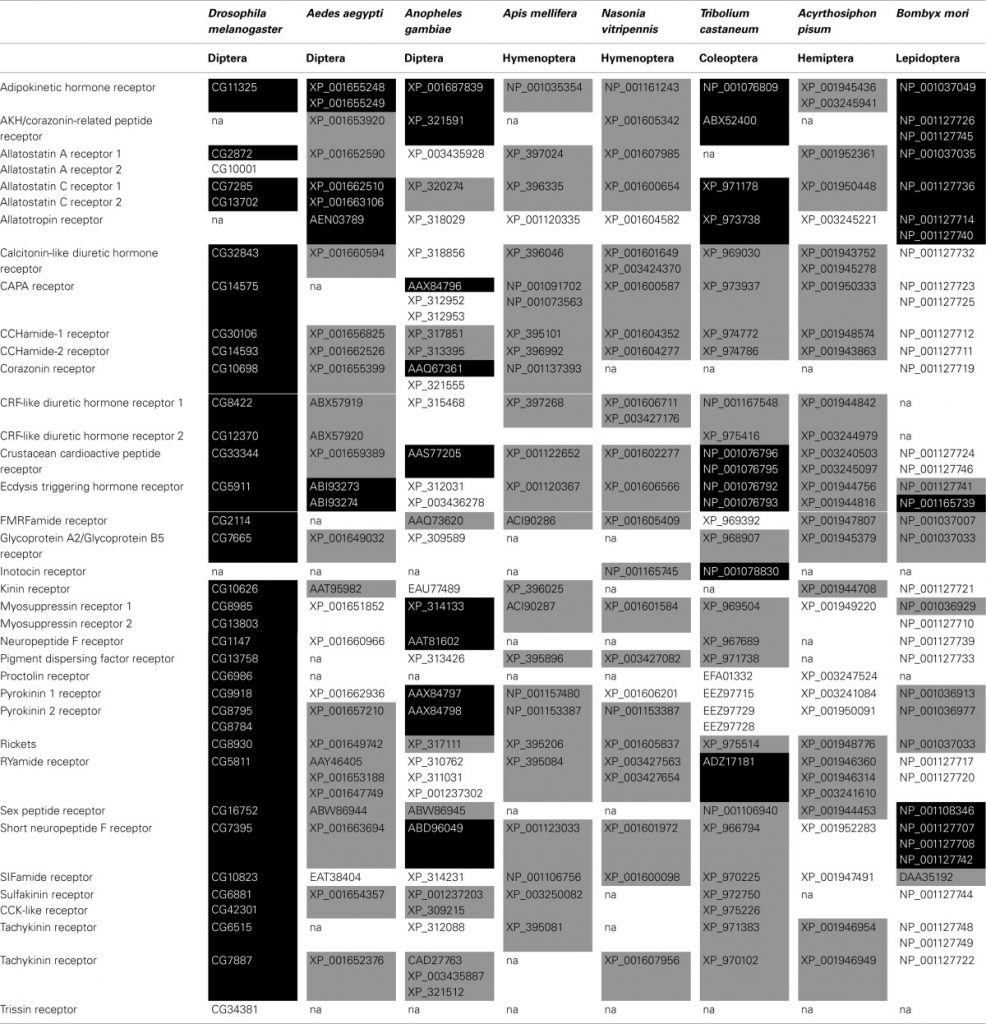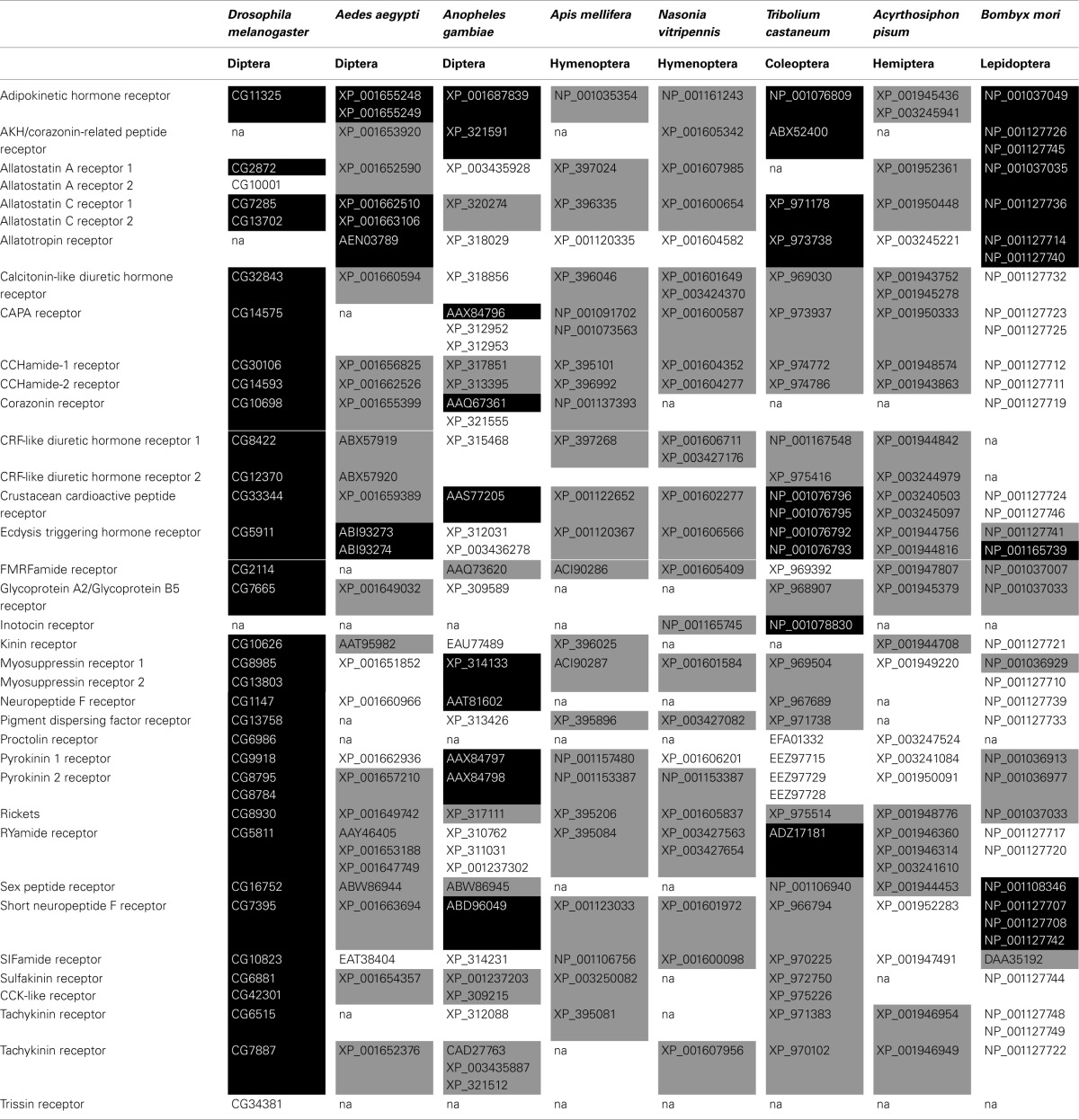More than two decades of research on insect neuropeptide GPCRs: an overview.
This evaluation focuses on the state of the artwork on neuropeptide receptors in bugs. Most of these receptors are G protein-coupled receptors (GPCRs) and are concerned within the regulation of just about all physiological processes throughout an insect’s life.
More than 20 years in the past a milestone in invertebrate endocrinology was achieved with the characterization of the primary insect neuropeptide receptor, i.e., the Drosophila tachykinin-like receptor. However, it took till the discharge of the Drosophila genome in 2000 that research on neuropeptide receptors boosted.
In the final decade a plethora of genomic info of different insect species additionally grew to become accessible, resulting in a greater perception within the features and evolution of the neuropeptide signaling programs and their intracellular pathways. It grew to become clear that some of these programs are conserved amongst all insect species, indicating that they fulfill essential roles of their physiological processes.
Meanwhile, different signaling programs appear to be misplaced in a number of insect orders or species, suggesting that their actions had been superfluous in these bugs, or that different neuropeptides have taken over their features.
It is putting that the deorphanization of neuropeptide GPCRs will get a lot consideration, however the subsequent unraveling of the intracellular pathways they elicit, or their physiological features are sometimes hardly examined.
Especially in bugs apart from Drosophila this info is scarce if not absent. And though nice progress made in characterizing neuropeptide signaling programs, even in Drosophila a number of predicted neuropeptide receptors stay orphan, awaiting for his or her endogenous ligand to be decided. The current evaluation offers a précis of the insect neuropeptide receptor research of the final two decades.
But it must be emphasised that the work executed up to now is simply the tip of the iceberg and our complete understanding of these necessary signaling programs will nonetheless improve considerably within the coming years.

Roles of glial cells in neural circuit formation: insights from research in bugs.
Investigators through the years have famous many putting similarities within the structural group and performance of neural circuits in increased invertebrates and vertebrates. In newer years, the invention of similarities within the mobile and molecular mechanisms that information growth of these circuits has pushed a revolution in our understanding of neural growth.
Cellular mechanisms found to underlie axon pathfinding in grasshoppers have guided productive research in mammals. Genes found to play key roles within the patterning of the fruitfly’s central nervous system have subsequently been discovered to play key roles in mice.
The range of invertebrate species gives to investigators quite a few alternatives to conduct experiments which are tougher or inconceivable to do in vertebrate species, however which are more likely to shed gentle on mechanisms at play in growing vertebrate nervous programs.
These experiments elucidate the broad suite of mobile and molecular interactions which have the potential to affect neural circuit formation throughout species.
Here we focus on what is thought about roles for glial cells in some of the necessary steps in neural circuit formation in experimentally advantageous insect species. These steps embody axon pathfinding and matching to targets, dendritic patterning, and the sculpting of synaptic neuropils.
A constant theme is that glial cells work together with neurons in two-way, reciprocal interactions. We emphasize the impression of research carried out in bugs and discover how insect nervous programs would possibly greatest be exploited subsequent as scientists search to grasp in but deeper element the complete repertory of features of glia in growth.

